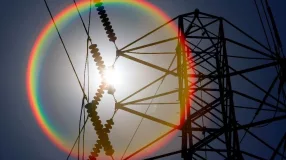In this segment of our FERC Explainer series, we take a closer look at the history of the Federal Energy Regulatory Commission and how it reviews interstate natural gas pipeline certificate applications to determine whether the project is in the public interest.
The roots of FERC began in 1920, when Congress established FERC’s predecessor, the Federal Power Commission (FPC), under the Federal Water Power Act (FWPA, now referred to as the FPA). This was a landmark piece of legislation that provided oversight of hydroelectric projects on federal land or navigable waters to the FPC.
In 1930, the FPC was officially recognized as an independent federal agency comprised of five commissioners (see FERC Explainer Part One for more information on FERC commissioners). At this time, the FPC was granted oversight of the interstate transmission of electricity and hydropower. Just eight years later, Congress passed the Natural Gas Act of 1938 (NGA), giving the FPC jurisdiction over the siting, operation and rates of interstate natural gas pipelines, and sales for resale of natural gas. While the NGA largely paralleled the procedures set out by the FPA, it deviated in some very specific and purposeful ways, shaping FERC as we know it today.
Decades later, following the 1973 oil crisis, Congress passed the Department of Energy Organization Act in 1977. The legislation sought to consolidate a number of energy-related agencies, creating the Department of Energy (DOE), but kept the FPC as an independent regulatory body within the department. At this time, the FPC was renamed the Federal Energy Regulatory Commission, more commonly known as FERC.
FERC’s Permitting Process Today
Today, FERC is the lead federal agency responsible for the review and approval of interstate natural gas pipelines. Under section 7 of the NGA, FERC must determine that new interstate gas pipeline projects or expansions are in “the public convenience and necessity” in order to approve them. To demonstrate the need for a project, pipeline developers begin by assessing market demand. This includes hosting both informal and formal “open seasons” to solicit interest in the project. The results of the open season process determine if enough shippers (pipeline customers) are willing to commit to long-term firm transportation contracts for pipeline capacity. These shipper commitments also help the pipeline determine how to size its project. If a project does not receive sufficient market support in this early stage, it will not progress further or receive approval. Pipeline developers also engage in extensive outreach to landowners and communities along the proposed pipeline route prior to filing their certificate application at FERC so that they can identify a pipeline route which avoids or minimizes landowner and environmental concerns.
Next, many pipelines, particularly the larger projects, go through a pre-filing process with FERC to identify and address, to the extent possible, contested issues prior to filing their formal certificate application. This process can take anywhere from six to 12 months and is mandatory for LNG export projects.
After resolving as many outstanding landowner, environmental and routing issues as possible during the pre-filing process, pipeline operators then file a formal FERC certificate application. FERC will review the pipeline’s proposed route, and alternative routes, and assess whether the project will have a significant impact on human health and the environment, as required under the National Environmental Policy Act (NEPA). Numerous federal, state and local permitting agencies, landowner and stakeholder groups engage in FERC’s review and offer comments on the proposed project. FERC addresses identified environmental concerns and comments in its NEPA review, which typically takes well over a year to complete.
Finally, once FERC has determined sufficient market support for a project, thoroughly reviewed the project’s environmental impact, mitigated any impacts and stakeholder concerns to the extent possible, and determined that the benefits of the project outweigh any remaining impacts, FERC will issue a certificate of public convenience and necessity pursuant to section 7 of the NGA. Virtually all FERC certificates contain numerous conditions that pipeline developers must meet to protect the environment and property, such as avoiding culturally-sensitive areas, limiting construction to certain times of the year to mitigate potential impacts on endangered or threatened species, maintaining specific noise limitations during construction and operation, and requirements for restoring land after construction. Other conditions include acquiring outstanding federal or state authorizations or permits, unless waived, prior to construction.
FERC’s Office of Energy Projects then oversees the construction of the project to ensure it remains in compliance with the certificate’s construction and operation requirements. And though not under its immediate jurisdiction, FERC actively works with other agencies, like the Pipeline and Hazardous Materials Safety Administration (PHMSA) and the Department of Homeland Security, to ensure the safety and security of the approved natural gas pipeline project both during construction and after the pipeline is in operation.
In Conclusion
As we have seen in the Northeast and other areas across the country, additional natural gas infrastructure is needed both to alleviate current supply constraints and to complement the development of renewables to meet the growing demand for low carbon, economic energy. As the agency responsible for certificating interstate natural gas pipelines and establishing the rates and terms and conditions under which they must operate, FERC plays an integral role in the future buildout of America’s energy infrastructure to meet the needs of our nation’s homes, businesses, and communities. Thanks to the work of the commissioners and staff, FERC continues to fulfill its duty and perform timely, predictable and thorough reviews of critical natural gas infrastructure projects for our country.
Source: Federal Energy Regulatory Commission, https://www.ferc.gov/industries-data/resources/ferc-processes






